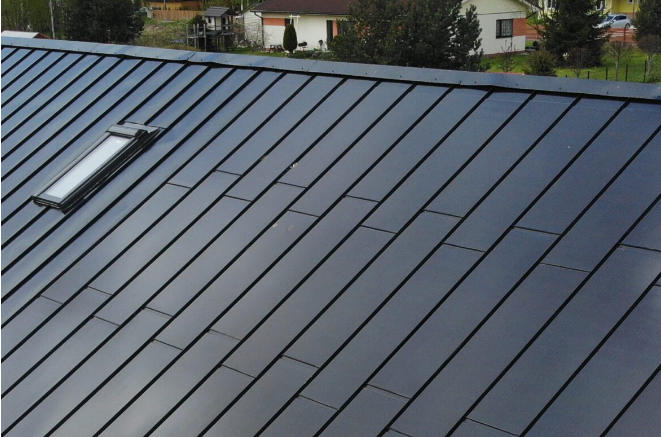Estonian start-up Roofit.solar secured in October €6.4 million from a group of investors led by BayWa r.e. Energy Ventures, an independent unit of German renewable energy company BayWa r.e., through a Series A investment round.
The investment round was supported by EdgeCap Partners, which focuses on private and venture capital investments in Europe; Taavet Hinrikus and Sten Tamkivi, Estonian entrepreneurs with experience at Wise, Skype and other well-known companies; local venture capital fund Spring Capital; and IT company Helmes Investments, the company said in a statement, noting that it had so far raised a total of €10 million in equity and €1.8 million in grant funding.
The money is currently being used to bring to the market a building-integrated photovoltaic (BIPV) module technology that the start-up developed with support from the Tallinn University of Technology (TalTech).
Roofit.solar currently sells three different seam black monocrystalline BIPV panels with power outputs of 110, 135 and 160 W. All the panels are equipped with a 0.5 mm metal back sheet with highly durable pural coating and are claimed to have a snail trail-free structure. On the front side, the panels are covered with 3.2 mm tempered low-iron glass with anti-reflective technology and they can be used with a minimum roof slope of 10 degrees and minimum ventilation below 50 mm.
According to the manufacturer, the overlapping area on top of the panel is designed to ensure a waterproof connection between two adjacent panels on the roof and the overlapping area on the roof must be a minimum of 200 mm. The cables of the panels must run between the battens and the junction boxes under each panel must fit between two battens.
The smallest product is called Roofit 3×8/110W/RR33/B/DS and has a nominal power of 110 W. It features an open-circuit voltage of 15.9 V and a short-circuit current of 9.11 A. The module measures 1,343 x 550 mm and weighs 11 kg.
The middle-sized panel, dubbed Roofit 3×10/135W/RR33/B/DS, has an output of 135 W, an open-circuit voltage of 19.9 V and a short-circuit current of 9.04 A. It measures 1,658 x 550 mm and weighs 13.5 kg.
The most powerful module is the 160 W Roofit 3×12/160W/RR33/B/DS. It has an open-circuit voltage of 23.9 V and a short-circuit current of 9.0 A. It’s 1,973 x 550 mm in size and weighs 16 kg.
All the panels can be used with a maximum system voltage of 1,000 V and operating temperatures between -40 C and 85 degrees Celsius. Their power temperature coefficient is -0.36% per degree Celsius. The products come with a 25-year linear power output guarantee and a 10-year product guarantee. Its output is guaranteed at 80% of the original efficiency for 25 years.
The company produces the modules at its factory in Talliin, Estonia.






